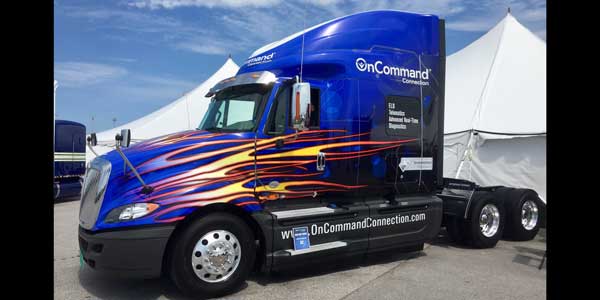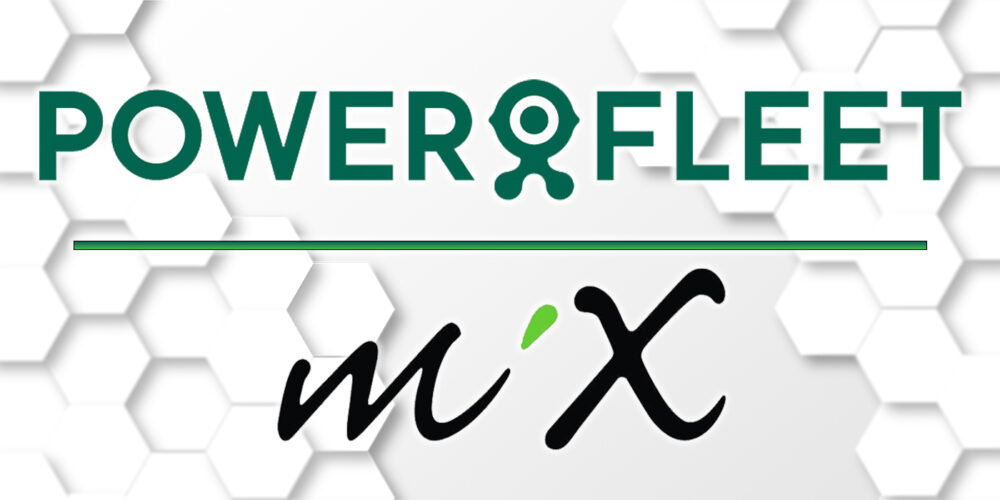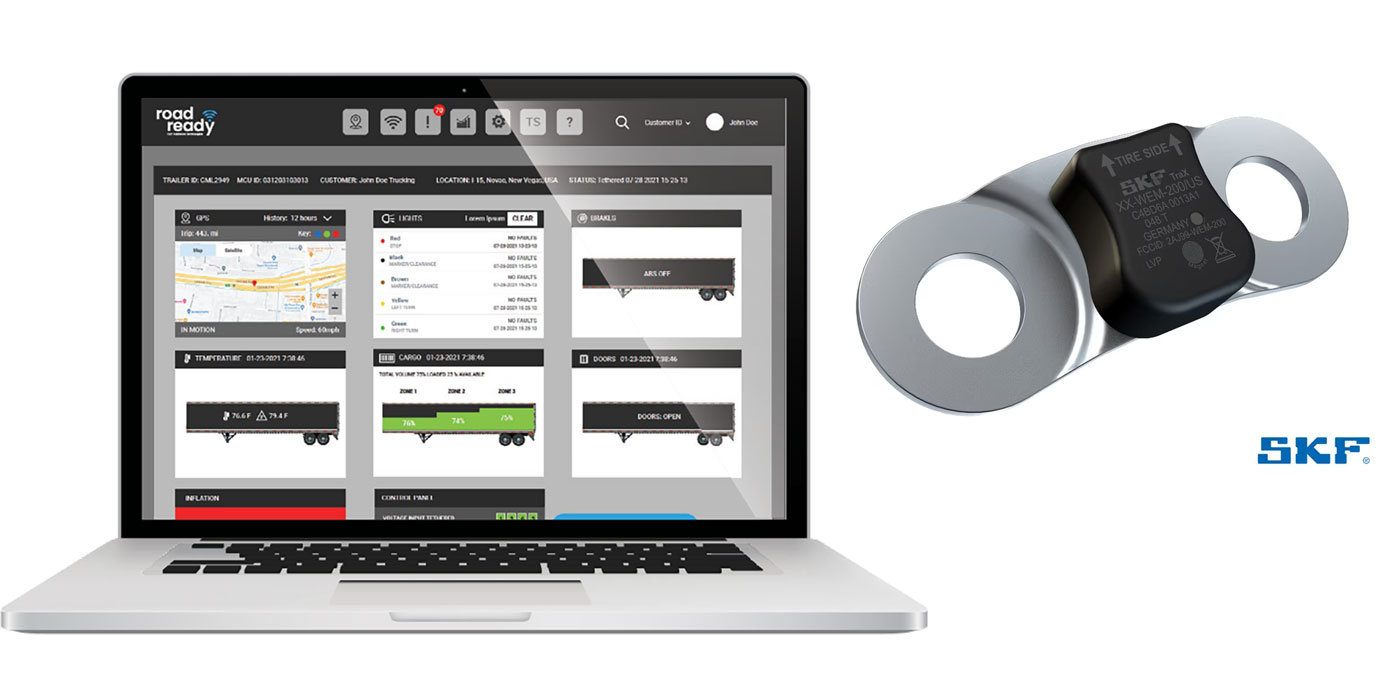Prior to recent advances in onboard electronics and telematics, it was difficult to diagnose developing maintenance issues or know that repairs were needed. Around the time vehicle emissions testing began, it became possible for engines to communicate when something was wrong, which could be displayed with an illuminated light on the dash or viewed during a dealer visit with a technician who performed a scan to display the diagnostic codes. This technology enabled problem identification and better decision-making regarding repair and maintenance practices to restore the vehicle’s health.
These days, many vehicles come equipped with a telematics device or one can be installed as an aftermarket product. The device reads diagnostic trouble codes from the engine, which can be sent remotely to a backend service that interprets the raw data and provides actionable insights. With near real-time remote visibility of diagnostic trouble codes, fleet managers can determine the severity of the issue and decide what to do to keep the vehicle operating at its best. While some large, long-haul fleets have a dedicated staff to monitor their trucks, today’s technology enables small- to medium-sized fleets the ability to remotely monitor the health of their fleet through a telematics device installed on their trucks too.
Despite the high adoption rate in telematics for vehicle tracking to comply with the electronic logging device (ELD) mandate, the majority of fleets are only scratching the surface of data usage. Although having this data will not eliminate the responsibilities of managing a fleet, it can make it easier to monitor common operating hurdles like vehicle maintenance needs, fuel usage and costs, and driver performance and safety issues. Let us take a deeper dive on how remote diagnostics can deliver valuable, actionable insights for fleet managers on those three common concerns.
Awareness of fuel economy
There’s a direct opportunity for fleets to save money on fuel costs and equipment wear and tear by coaching drivers to operate more efficiently. In fact, one truck can consume more than $70,000 annually in fuel alone. Telematics and remote diagnostics deliver feedback on driver behavior—hard acceleration, harsh braking, idle hours, etc.—that can have a major impact fuel consumption.
Interpreting data about how a vehicle is being operated allows fleet managers to understand which drivers would be most positively impacted by driver coaching. Through consistent training, drivers can learn how their behavior impacts the vehicle’s fuel economy and performance and can adjust their driving habits accordingly. Some fleets even implement a driver coaching program that incentivizes drivers to drive more efficiently. Driver coaching programs often result in a positive two-pronged effect—a reduction in fuel usage and maintenance costs and an improvement in driver productivity and retention.
Data alone cannot take the maintenance aspect out of fleet maintenance, but it can make it more insightful, allowing the information to be further leveraged to help a fleet operate more efficiently. Vehicle data from telematics can provide fleet managers with actionable information such as the location, speed and direction of their trucks, how safely and efficiently the vehicles are being driven, the health status of their trucks and how to get their trucks repaired in the event of a maintenance issue.
Proactive monitoring of vehicle data can improve the operational efficiency of a fleet. There is a widening gap between businesses leveraging technology to drive profitability and those who aren’t. For example, West Point, Miss.-based Royal Trucking’s reliance on information and insight has led to impressive gains in uptime and fleet productivity, and significant decreases in on-the-road repairs and repair bills, the fleet reports. Royal Trucking utilizes OnCommand Connection, Navistar’s telematics and remote diagnostics solution.
Monitoring diagnostic vehicle data can help fleets deal with real issues such as unnecessary stops, catastrophic breakdowns and fuel waste. Fleets that embrace technological advancement in telematics and diagnostics are also in a prime position to add even greater value to their businesses over time. Providers like OnCommand Connection are studying historical vehicle usage and patterns to not only predict when maintenance will be necessary, but also determine whether fleets have the right vehicles to meet their needs. Taking it one step further, data analytics can make it possible for providers to make recommendations on specific vehicle specs and engine calibrations to optimize fleets based on the historic data.
“We’re working toward a predictive maintenance shop, and a collection of historical health reports on our vehicles will help us get there,” says Shelby Tidwell, director of maintenance at Royal Trucking.
Avoid unnecessary stops
To maximize uptime, every fleet manager wants to reduce unscheduled vehicle maintenance, but imagine you’re a driver without a telematics device on your truck and a warning lights up the dashboard. Do you carry on and keep driving, or play it safe and stop by a service center to have it checked out and diagnosed? Without any detail behind the warning light, the driver questions it.
Fleets like Royal Trucking have embraced the power of remote diagnostics to improve the uptime of their vehicles.
“We wanted OnCommand Connection because it’s dependable and works on every model in our fleet. Repairs that occur in our own shop cost about 2/3 of what an on-the-road repair does,” said Tidwell. “Viewing the OnCommand Connection health reports throughout the day allows me to make a decision on whether or not the truck can make it back to our shop. That alone is a huge cost savings for us.”
Royal Trucking has OnCommand Connection on 80% the more than 250 trucks in its fleet, and reviews detailed vehicle health reports and fault code action plans to prioritize vehicle repairs and, ultimately, keep trucks on the road.
“When we initially implemented OnCommand Connection into our fleet, we were solely trying to limit downtime, but it’s evolved into much more than that,” Tidwell says. “The health reports provide fault codes and fault code action plans, which provides a lot of visibility into the mechanical side and keeps all vehicle records in one place.”
Through remote vehicle data monitoring, diagnostic trouble codes can be identified and prioritized, and the fleet manager can inform the driver how to proceed. Drivers can then act appropriately with information behind the warning light, whether it needs to be addressed immediately, or whether it is a routine issue that can be handled when the load is complete, or during the next scheduled maintenance visit.
Prevention of catastrophic breakdowns
The worst-case scenario for a driver and fleet manager alike is a road side breakdown.
Out-of-service vehicles can cost fleets $1,000 or more each day. In addition to leaving customers without service, a typical breakdown can take a truck off the road for seven to 10 days, leaves drivers idle, and fleet managers often must arrange for towing service and driver accommodations, so costs add up fast.
By monitoring vehicle data remotely, fleet managers can pinpoint trucks that have maintenance issues with the potential to become larger, more complex repairs. With near-real-time data collection and reporting, fleet managers know the status and health of each vehicle and can address issues early, with the opportunity to put a repair plan in place before major mechanical issues occur.
For example, replacing a faulty coolant line for $300 could potentially prevent a costly repair, such as replacing an EGR cooler, which might cost $4,000 or more.
The vehicle diagnostics industry is advancing rapidly and will reach a point in the near future where fleets have collected so much data through telematics that failures will be able to be predicted without a trouble code ever appearing, turning all proactive maintenance into predictive maintenance, otherwise known as prognostics.
In fact, some of the historical truck data from fleets that have been consistently monitoring their vehicles has already provided a benefit. Tidwell recalls one particular anecdote where one of his vehicles was experiencing a problem sporadically.
“When we brought the vehicle into the dealer to have it looked at, the fault code was not active and unable to be immediately resolved, even though we had been experiencing problems for some time,” he shares. “We reviewed the vehicle’s health report history and were able to see the fault code and its recommended action plan. Leveraging the historical data on that vehicle allowed us to avoid a second trip to the dealer by replacing the part and repairing the vehicle to get it back on the road before the fault code appeared again.”
Fleet managers must contend with a wide variety of operational challenges. As connectivity and big data analysis continue to evolve and advance, innovative use of this information can yield valuable insights and can produce significant savings for their businesses.
This article was contributed by Andrew Dondlinger, who has nearly 30 years of experience in information technology, business development, sales, and management consulting, focusing on the Americas, Europe and Asia. He is responsible for oversight of Navistar’s connected services business, including strategy, product innovation and planning and go-to-market planning.















